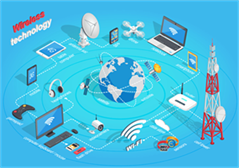Analytics And Enterprise Systems, B S < Saint Louis University

Содержание
Several of our clients tried out-of-the-box solutions only to find they didn’t fit their business processes. Together, they can streamline work across the whole organization, provide a 360° overview of your customers, automate business processes, and make them more transparent. Most companies maintain a database of customers, manage their inventory, process orders, and keep the books using outdated tools like Excel or pen and paper.
- Integrating these disparate systems is often complicated and requires a sizable IT staff or an IT services partner, so it doesn’t make sense for most small and midsize organizations.
- This also makes it difficult to see the full cause and effect of developments affecting your business.
- Enterprise software is expressly built to allow companies to mimic their unique business practices.
- We understand how customer relationships, SCM, and ERP are essential for lead generation.
- This saves the accounting team time and offloads a task most don’t look forward to.
If you have a lot of specialized processes, look for an extensible system that allows your integrator or IT staff to write code that adds needed features, or that can integrate with homegrown or legacy solutions. However, before going the custom route, take a close look at your processes enterprise systems include analytical tools. — the prebuilt functionality and configurations modern ERP solutions support are based on best practices gathered from thousands of companies. While ERP software helps businesses follow best practices, it also offers the flexibility to support unique processes and objectives.
Enterprise application vendors have created ________ to make their own customer relationship management, supply chain management, and enterprise systems work closely together with each other. The supply chain is the entire production flow that consists of a number of actions performed by an organization to convert raw materials into finished products and services. Usually, it engages several organizations of small, medium or large size that work on orders and deliver the product or service to the end consumer. For any organization with a complex structure, be it a large corporation, educational institution or government department, proper software is essential. There are different types of enterprise systems that ensure stable operational flow and make the management of assets easier. In this article, we will examine their major types and functions.
Types Of Digital Enterprise Systems: All You Need To Know
With third-party integrations it is possible to make payment transactions safer, faster, and easier. Payment options like PayPal and Venmo can offer more flexible procedures. With these services, the program can adjust to large-scale business needs without decreasing high standards of performance. Kennected is a software as a service company equipped with the best tools for lead generation, which is made possible through Cloud Kinect. We understand how customer relationships, SCM, and ERP are essential for lead generation.

The second is to buy all the modules you need from the ERP vendor and avoid integrations since the applications are already designed to work together. Digital systems help organizations increase the efficiency of their activities, control the work of different departments better, share knowledge and enhance transparency in business processes. Enterprise software development offers great benefits to the regular workflow and elevates its productivity. The supply chain management system is software that helps streamline all these processes. It makes the routine work of suppliers, manufacturers, logistics managers and retailers easier. For all the parties, it helps in tracking and communicating with each other, establishing better procedures and delivering ready-made products to the customer more quickly.
Companies across every industry, with diverse business models, have realized the benefits that come with ERP. Flexible solutions with extensive functionality can cater to a wide variety of organizations and requirements. Manufacturing can be complicated, and this module helps companies coordinate all the steps that go into making products. The module can ensure production is in line with demand and monitor the number of in-progress and finished items. When a company uses business systems from multiple vendors, integrations are generally possible to make data automatically flow into the ERP.
Erp
That’s why enterprises often have difficulties keeping up with the times. By cutting down the number of manual actions, the solution has freed up the editors’ time to review more articles. Since the release contributors from 80 countries submitted more than 1,000 manuscripts increasing the company’s bottom line. Our Business Analyst inspected the workflow and designed a solution to streamline the publishing process. The market offers a large number of low-code BPM platforms that allow companies to create visual representations of their processes, remove bottlenecks, and simplify decision-making.

It helps me track my contacts better and make sure that every process is under control. With these enterprise systems, I am sure that information on my contacts is safe and I can always find and update their details easily. Customer relationship management is software that helps corporations and businesses access and present consistent customer messages. The message is customer insights; you can access them by gathering all the latest information about a lead. D) modify their existing workflows to comply with supply-chain management systems.
Thanks to it, companies can launch efficient campaigns, improve their content and provide multichannel support to their clients. Salesforce is one integrated CRM platform that lets all departments in a company share data on clients. It is enhanced with robust reporting instruments, automation, user-friendly communication and reliable support. For optimization of all the processes, they enjoy great benefits from using CRM. Organizations use CRM for gathering details of their clientele, decrease the time employees spend on routine tasks, grow their businesses. Customer Relationship Management plays an essential role in company management.
Using cloud applications from your legacy ERP vendor often produces the same or better intelligence without needing an additional vendor relationship. Finding cloud applications that complement your legacy ERP software modules lets you immediately take advantage of rapidly advancing new technologies and improving user paradigms. These provide complimentary https://globalcloudteam.com/ systems that deliver immediate business capabilities and value without a fundamental change in your operations. Companies may struggle to achieve a single view of the customer if their data sets are not connected and organized in a single dashboard or interface. Challenges also arise when systems contain duplicate customer data or outdated information.
Because many midsize organizations lack large IT teams, cloud ERP software is very popular in this segment as well. In addition to lower initial expenses, leading SaaS solutions can be more user-friendly for a company that has limited in-house technical expertise. However, midsize businesses that require numerous customizations or must follow regulatory policies that bar them from storing information in the cloud may opt for on-premises deployments or a hybrid approach.
At the same time, the costs of implementing an ERP system began to climb. The hardware required to run the software was typically on company premises, with big machines in a server room. Both the hardware and the software licenses required capital investments and depreciated over 5 to 10 years. In addition, organizations nearly always wanted to customize their ERP systems to fit their specific needs, entailing an additional expense of software consultants and training. In 1913, engineer Ford Whitman Harris developed what became known as the economic order quantity model, a paper-based manufacturing system for production scheduling. Toolmaker Black and Decker changed the game in 1964 when it became the first company to adopt a material requirements planning solution that combined EOQ concepts with a mainframe computer.
CRM is mainly focused on data processing, interaction with buyers, improvement of marketers’ job. The sales departments can also use CRM to help track the interactions with customers and prospects. For example, it provides clear evidence of when they contacted the customer, what they bought, or what they will most probably buy in the future. The marketing department can use your CRM to track the marketing campaigns and measure the return on your investment. They will be able to achieve this by using how many people became your customers from every campaign run.
Whats The Difference Between Erp And Financials?
The goal is to improve customer service relationships and assist in customer retention and drive sales growth. CRM systems can also give customer-facing staff members detailed information on customers’ personal information, purchase history, buying preferences and concerns. Using an Enterprise Resource Planning system can be a major benefit for companies looking to streamline their customer service experience. Automation saves time, which can then be used towards efforts to respond to customer requests for product information and to forecast for new products. If employees are spending less time on tracking down a customer’s order, they can spend more time developing long-lasting, profitable customer relationships.
Types Of Enterprise Software That Will Give You A Competitive Edge
This leads to better decision-making by organizational leaders who now have easy access to all relevant data. Perhaps the biggest value proposition of ERP systems is they can save your organization money in a number of ways. By automating many simple, repetitive tasks, you minimize errors and the need to add employees at the same rate as business growth. Cross-company visibility makes it easier to spot inefficiencies that drive up costs and leads to better deployment of all resources, from labor to inventory to equipment.
As they move through the supply chain, ________ are transformed into finished products and shipped to retailers and customers. Enterprise systems help firms respond rapidly to customer requests for information or products. Map the software’s business processes to the company’s business processes. Map the company’s business processes to the software’s business processes. Modify their existing workflows to comply with supply-chain management systems. ________ modules in CRM systems help sales staff increase their productivity by focusing sales efforts on the most profitable customers, those who are good candidates for sales and services.
CRM systems in the B2B market help create more visibility into leads and, therefore, increase efficiency throughout the sales process. Sales leads can be tracked through CRM, enabling sales teams to input, track and analyze data for leads in one place. Enterprise applications can automate routine tasks, improve client relationships, and increase the company’s bottom line via higher efficiency or direct revenue.
Erp Integration
Businesses are realizing that customers are long-term assets, and by utilizing an enterprise system they can keep these assets in their portfolio. Companies also save time and money by automating manual processes and reducing opportunities for errors. ERP stands for enterprise resource planning, a term research firm Gartner coined in 1990 to refer to the business management platforms enterprises had begun using.
This again emphasizes the importance of storing business data in a usable format. Ultimately, the ability to streamline the supply chain means that products are delivered to customers more reliably, and at a lower cost, than would otherwise be possible. Business environments are always changing, and that means that waiting months for data is simply no longer feasible. Having access to real-time information about a business’s operations is a powerful feature of enterprise systems. A high level of access to data allows leadership to assess and improve upon the company’s processes far more efficiently than if they had to wait months before having actionable data.
This can lead to unexpected costs and delays, so review your databases, and work with your IT team or an integration partner to identify potential data compatibility issues early on. Then, you can factor conversion efforts into the ERP implementation plan. Over-reliance on email and spreadsheets to collate and share critical information is another indicator you need ERP. Spreadsheets require frequent, manual updates, meaning they are often outdated.
3) An enterprise system helps reduce redundant business processes. In a pull-based model of SCM systems, production master schedules are based on forecasts of demand for products. Supply chain execution systems enable the firm to generate demand forecasts for a product and to develop sourcing and manufacturing plans for that product. An enterprise system helps reduce redundant business processes. From the 1990s until the beginning of the twenty-first century, ERP adoption grew rapidly.
Some connectors operate in real time, others sync up systems on a daily or weekly basis. Some move only a limited set of data between systems, and some work in only one direction — say, from an inventory management system into the ERP. If your team has done extensive custom configurations, some data types might not be known to the connector.




